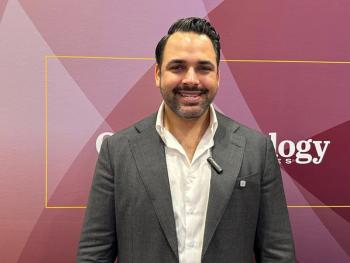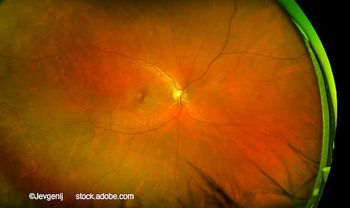
FDA grants clearance for digital fundus camera
The FDA has granted 501(k) marketing clearance for a new digital fundus camera that combines mydriatic and non-mydriatic functions in a single device that may open the doors for the general ophthalmologist to monitor and treat some retinal diseases.
Paramus, NJ-The FDA has granted 501(k) marketing clearance for a new digital fundus camera that combines mydriatic and non-mydriatic functions in a single device that may open the doors for the general ophthalmologist to monitor and treat some retinal diseases.
The camera features high-quality optics capable of taking retinal images through dilated or undilated pupils. It can take intravenous fluorescein angiography and non-mydriatic retinal screening for diabetic retinopathy and glaucoma.
"I can train someone who's never taken a picture before and have them take non-mydriatic color photos in 15 minutes," said Dowell, who is a certified retinal angiographer.
Fluorescien angiography pictures take a bit more training, he said, but because results can be immediately viewed on a monitor, the technician can try again if the image is unclear.
"In a comprehensive ophthalmology practice, I can train someone in a very short time in the basic skills necessary to gain acceptable imagery," he said.
Flexibility
Because the camera has both mydriatic and non-mydriatic capabilities, it can swing laterally left to right and tilt up and down to sweep the visual field, unlike traditional mydriatic cameras that don't move side to side, Dowell said.
"This camera will allow you to move the instrument to capture more peripheral images of the retina," he said. "That's very important in capturing diabetic retinopathy changes."
The images can be linked to the company's Web browser system (EyeRoute), which will allow them to be accessed from any location with Internet capabilities.
It is that flexibility to review images from home that appeals to Mark H. Rubinstein, MD, director of the Michigan Eyecare Institute, Southfield, MI.
Although the camera has been placed in his office only 8 days, Dr. Rubinstein said he is impressed.
"It's easy to use, and the optics are phenomenal," he said.
Cost savings
Until 1 year ago, Dr. Rubinstein's practice had used a film fundus camera. Going digital has meant a "huge cost savings," and easier documentation, he added.
The combined camera is priced to appeal to comprehensive ophthalmologists who are reluctant to purchase separate devices, Dowell said. That should help put the camera in the hands of more general ophthalmologists who can take non-mydriatic images to diagnose diabetic retinopathy, for example, then perform fluorescein angiography with the mydriatic side to find leakages, he said.
The ophthalmologist has then identified the disease and can treat the patient rather than sending him or her off to a retinal specialist, Dowell added.
That means the general ophthalmologist can help more patients, since there aren't enough retina specialists to match the growing need, he said.
"[A general ophthalmologist] probably wouldn't go out and spend a huge amount of money for a high-end system, but this camera, because it's easy to use by inexperienced folks, is at a much lower cost than a full-blown retinal imaging system, and it's digital," Dowell said. "It's causing the comprehensive ophthalmologist to say, 'this is a viable option.'
Newsletter
Don’t miss out—get Ophthalmology Times updates on the latest clinical advancements and expert interviews, straight to your inbox.



















































.png)


